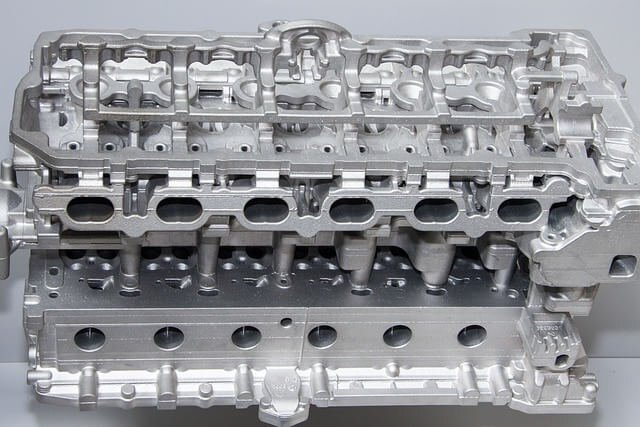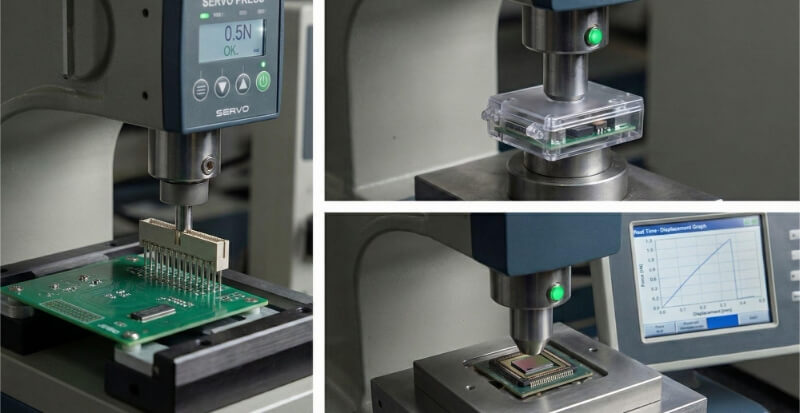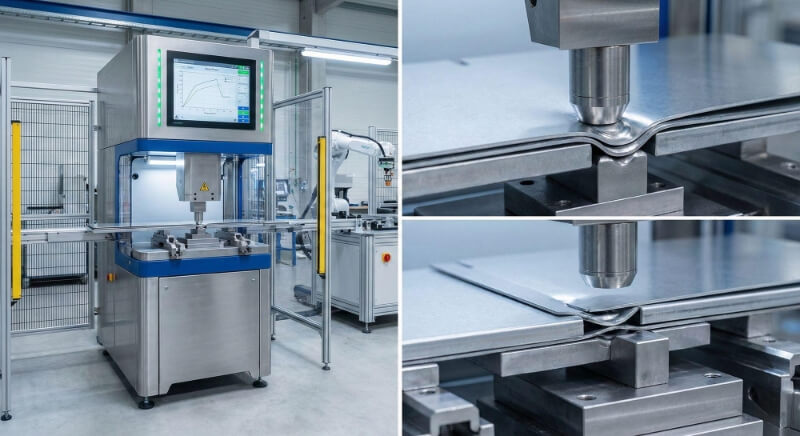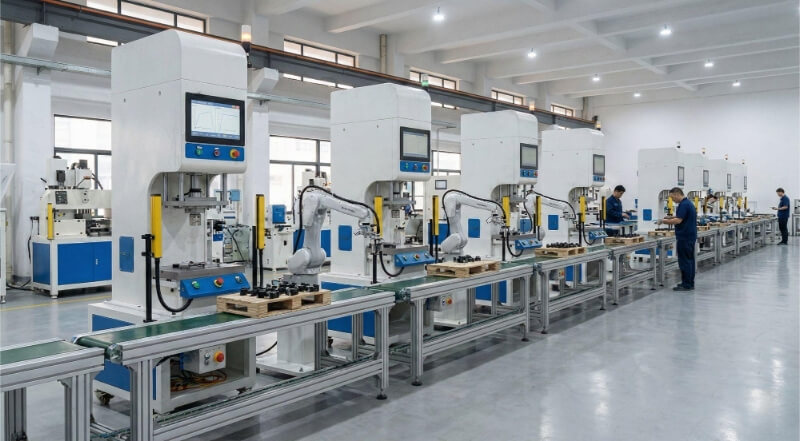Aluminium is overal. Je ziet het in auto's, vliegtuigen, smartphones en zelfs in frisdrankblikjes. Mensen vertrouwen aluminium omdat het licht en sterk is. Velen willen weten: Roest aluminium? Zo niet, corrodeert het dan nog steeds? Laten we de feiten eens op een rijtje zetten en deze puzzel voorgoed oplossen.
Als je wilt weten wat er met aluminium gebeurt als het aan de omgeving wordt blootgesteld, blijf dan lezen. Het echte verhaal achter aluminiumcorrosie is interessanter dan de meeste mensen denken.

Wat is aluminium?
Aluminium is een licht, zilverwit metaal dat afkomstig is uit de aardkorst. Het is het op twee na meest voorkomende element op aarde, na zuurstof en silicium. In de natuur komt aluminium niet voor als glimmend metaal. In plaats daarvan wordt het gevonden in rotsen en mineralen, voornamelijk in een soort erts dat bauxiet wordt genoemd.
Om waardevol aluminium te maken, veranderen fabrieken bauxiet eerst in een wit poeder dat aluminiumoxide wordt genoemd. Daarna gebruiken ze een proces dat elektrolyse heet om zuiver aluminium te krijgen. Dit proces maakt gebruik van elektriciteit om aluminium van zuurstof te scheiden. Het resultaat is een metaal dat licht is, makkelijk te vormen en waardevol in veel industrieën.
In de meeste gevallen wordt aluminium niet alleen gebruikt. Het wordt gemengd met kleine hoeveelheden andere metalen zoals koper, magnesium, silicium of zink. Deze toegevoegde elementen maken het sterker. Het uiteindelijke mengsel staat bekend als een aluminiumlegering.
Roest aluminium?
Veel mensen verwarren roest met corrosie. Roest is een specifieke vorm van corrosie die ijzer en staal aantast. Aluminium roest niet omdat het geen ijzer bevat. Maar dat betekent niet dat het onaangetast blijft door zijn omgeving.
Reactie van aluminium op zuurstof
Wanneer aluminium in contact komt met zuurstof in de lucht, begint er een chemische reactie. Het oppervlak van het metaal reageert met zuurstof en vormt een dunne laag aluminiumoxide. Deze laag is slechts een paar nanometer dik, maar is extreem sterk en stabiel.
Oxidatie verzwakt metalen meestal. Maar in het geval van aluminium werkt het tegengesteld. De aluminiumoxidelaag blijft stevig aan het oppervlak plakken. Het schilfert niet af zoals roest. In plaats daarvan vormt het een hechte afsluiting die meer lucht en vocht tegenhoudt. Dit helpt het aluminium eronder te beschermen tegen verdere schade.
Waarom aluminium niet roest zoals ijzer?
Roest ontstaat wanneer ijzer reageert met zowel zuurstof als water. Hierdoor ontstaat ijzeroxide, dat zwak en brokkelig is. Roest schilfert af, waardoor er vers metaal onder komt te liggen. Dat verse metaal roest vervolgens en de cyclus herhaalt zich. Na verloop van tijd vreet roest het metaal aan.
Aluminium werkt anders. De oxidelaag valt er niet af. Het blijft op zijn plaats zitten en dicht het metaal af en schermt het af. Zelfs als er krassen op komen, vormt de oxidelaag zich weer op het blootgestelde oppervlak. Zelfs als er krassen op komen, vormt de oxidelaag zich weer op het blootgestelde oppervlak. Deze zelfherstellende eigenschap maakt aluminium zeer stabiel.
Aluminium- en ijzercorrosie vergelijken
IJzercorrosie is actief en destructief. Als het eenmaal begint, verspreidt het zich en verzwakt het het onderdeel. Vaak zijn verf of coatings nodig om de schade te vertragen.
Aluminiumcorrosie, als het gebeurt, gaat veel langzamer. Meestal is de oxidelaag voldoende om het te beschermen. Alleen in ruwe omgevingen, zoals zout water of zure lucht, heeft aluminium extra bescherming nodig.
Veel voorkomende oorzaken van aluminiumcorrosie
Aluminium is beter bestand tegen corrosie dan veel andere metalen. Maar onder de verkeerde omstandigheden kan het toch afbreken. De oorzaken van corrosie variëren afhankelijk van de omgeving, de blootstelling en het gebruikte type aluminium.
Vocht en zuurstof
Aluminium reageert snel met zuurstof in de lucht. Deze reactie creëert een dunne laag aluminiumoxide. Deze laag beschermt het oppervlak. In aanwezigheid van vocht kan deze laag na verloop van tijd echter verzwakken. Als er water op het oppervlak blijft liggen, kan corrosie op kleine plekjes beginnen. Na verloop van tijd kan dit leiden tot putjes.
Blootstelling aan zout en chloor
Zout is een van de schadelijkste elementen voor aluminium. Het breekt de beschermende oxidelaag af. Daarom corrodeert aluminium sneller in de buurt van de oceaan of in gebieden met strooizout. Zout water kan diepe putten vormen op het oppervlak. Deze schade kan zowel het uiterlijk als de prestaties beïnvloeden.
Zuren en Alkaliën
Sterke zuren of logen kunnen aluminium aantasten. Deze stoffen verwijderen de oxidelaag en laten het basismetaal blootliggen. Zodra dit gebeurt, corrodeert aluminium sneller. Zure regen, industriële dampen en agressieve schoonmaakchemicaliën kunnen allemaal een rol spelen.
Contact tussen ongelijksoortige metalen (galvanische corrosie)
Wanneer aluminium een ander metaal raakt en beide nat zijn, kan er een reactie ontstaan. Dit wordt galvanische corrosie genoemd. Het meer reactieve metaal, vaak aluminium, begint als eerste af te breken. Dit gebeurt meestal in bevestigingsmiddelenverbindingen of samenstellingen van gemengde materialen.
Hoge vochtigheid of vervuilde lucht
In gebieden met een hoge luchtvochtigheid blijven aluminium oppervlakken langer nat. Hierdoor heeft corrosie meer tijd om te beginnen. Vervuilde lucht bevat vaak chemicaliën zoals zwavel- of stikstofverbindingen. Deze chemicaliën kunnen zure vochtigheid op het oppervlak creëren en de oxidelaag beschadigen.
Slechte coating of oppervlakteafwerking
Verf of coating beschermt aluminium tegen de omgeving. Maar als de laag dun, gebarsten of versleten is, kunnen water en chemicaliën het oppervlak bereiken. Zodra de bescherming faalt, begint corrosie eronder en verspreidt het zich.

Onderhoudspraktijken om corrosie te voorkomen
Aluminium gaat lang mee, maar als je het goed verzorgt, gaat het nog langer mee. Volg deze eenvoudige stappen om corrosie te voorkomen.
Regelmatig schoonmaken
Stof, vuil en zout kunnen vocht vasthouden op het oppervlak, wat kan leiden tot corrosie. Reinig aluminium onderdelen vaak met milde zeep en water. Neem ze af met een zachte doek of spons. Gebruik geen staalborstels of ruwe pads, want die kunnen krassen maken op het oppervlak.
Spoel de onderdelen in kustgebieden of industriegebieden vaker af met schoon water. Dit helpt om zout of chemische afzetting te verwijderen voordat het schade veroorzaakt.
Droge opslag
Bewaar aluminium onderdelen in droge, goed geventileerde ruimtes. Probeer ze niet zo te stapelen dat er water in blijft staan. Bewaar onderdelen indien mogelijk onder een lichte hoek zodat het water weg kan lopen. Een goede luchtstroom helpt oppervlakken droog te blijven en vermindert de kans op corrosie.
Metaalcontact vermijden
Wanneer aluminium in contact komt met andere metalen zoals staal of koper, kan er corrosie ontstaan. Dit wordt galvanische corrosie genoemd. Om dit te voorkomen kun je plastic afstandhouders, rubber pads of isolerende coatings gebruiken. Deze materialen blokkeren de elektrische verbinding tussen metalen en verlagen het risico op schade.
Beschermende coatings
In ruwe omgevingen kan het helpen om een beschermende laag toe te voegen. Coatings zoals heldere afdichtmiddelen, verf of anodiseren geven extra weerstand tegen corrosie. Deze lagen zorgen ervoor dat vocht en lucht het metaal niet kunnen bereiken. Kies de juiste coating op basis van waar en hoe het onderdeel wordt gebruikt.
Routinecontroles
Kijk af en toe goed naar aluminium onderdelen. Let op kleurveranderingen, vlekken of kleine putjes. Dit kunnen vroege tekenen van corrosie zijn. Als je problemen in een vroeg stadium ontdekt, kun je ze gemakkelijker verhelpen voordat ze erger worden.
Conclusie
Aluminium roest niet omdat het geen ijzer bevat. In plaats daarvan vormt het een dunne oxidelaag die het beschermt tegen verdere schade. Door deze natuurlijke barrière is aluminium zeer goed bestand tegen corrosie in de meeste omgevingen. In zware omstandigheden zoals zout water, zure lucht of wanneer het in contact komt met ongelijksoortige metalen, kan aluminium na verloop van tijd echter toch corroderen.
Aluminium onderdelen op maat nodig voor je volgende project? Wij bieden snelle offertes, deskundige ondersteuning en precisieproductie voor zowel prototypes als productie. Neem vandaag nog contact met ons op om aan de slag te gaan met je tekening en specificaties.
FAQs
Kan aluminium roesten in water?
Nee, aluminium kan niet roesten in water omdat het geen ijzer bevat. Het kan echter wel corroderen als het lange tijd aan water wordt blootgesteld, vooral als het water zout is of zuren bevat. De aluminiumoxidelaag beschermt het tot op zekere hoogte, maar in stilstaand of agressief water kan er langzaam corrosie ontstaan.
Kan aluminium in zout water worden gebruikt?
Ja, maar voorzichtig. Aluminium wordt gebruikt in maritieme omgevingen, maar zout water kan na verloop van tijd putcorrosie veroorzaken. Marine-grade aluminiumlegeringen zoals 5052 of 5083 presteren beter in deze omstandigheden. Beschermende coatings, regelmatig afspoelen met zoet water en een goed ontwerp helpen de duurzaamheid op lange termijn te verbeteren.
Wat is witte roest op aluminium?
Witte roest is geen echte roest. Het is een vorm van corrosie die verschijnt als een krijtachtige, witte afzetting op aluminium oppervlakken. Het gebeurt meestal wanneer aluminium wordt opgeslagen in vochtige, slecht geventileerde ruimtes of onder plastic folie. Hoewel het er slecht uitziet, tast het vaak alleen het oppervlak aan en kan het verwijderd worden.
Hoe lang gaat aluminium buiten mee?
Aluminium kan buiten tientallen jaren meegaan, vooral als het goed wordt onderhouden. De natuurlijke oxidelaag beschermt het goed in droge of milde klimaten. In kustgebieden of industriegebieden kan de levensduur korter zijn, tenzij er extra stappen zoals coatings of anodiseren worden toegepast.
Is geanodiseerd aluminium bestand tegen roest?
Geanodiseerd aluminium is niet roestbestendig omdat aluminium zelf niet roest. Anodiseren maakt de oxidelaag echter dikker, waardoor het harder en corrosiebestendiger wordt. Het is een goede optie voor ruwe omgevingen waar extra bescherming nodig is.
Hey, ik ben Kevin Lee

De afgelopen 10 jaar heb ik me verdiept in verschillende vormen van plaatbewerking en ik deel hier de coole inzichten die ik heb opgedaan in verschillende werkplaatsen.
Neem contact op

Kevin Lee
Ik heb meer dan tien jaar professionele ervaring in plaatbewerking, gespecialiseerd in lasersnijden, buigen, lassen en oppervlaktebehandelingstechnieken. Als technisch directeur bij Shengen zet ik me in om complexe productie-uitdagingen op te lossen en innovatie en kwaliteit in elk project te stimuleren.




